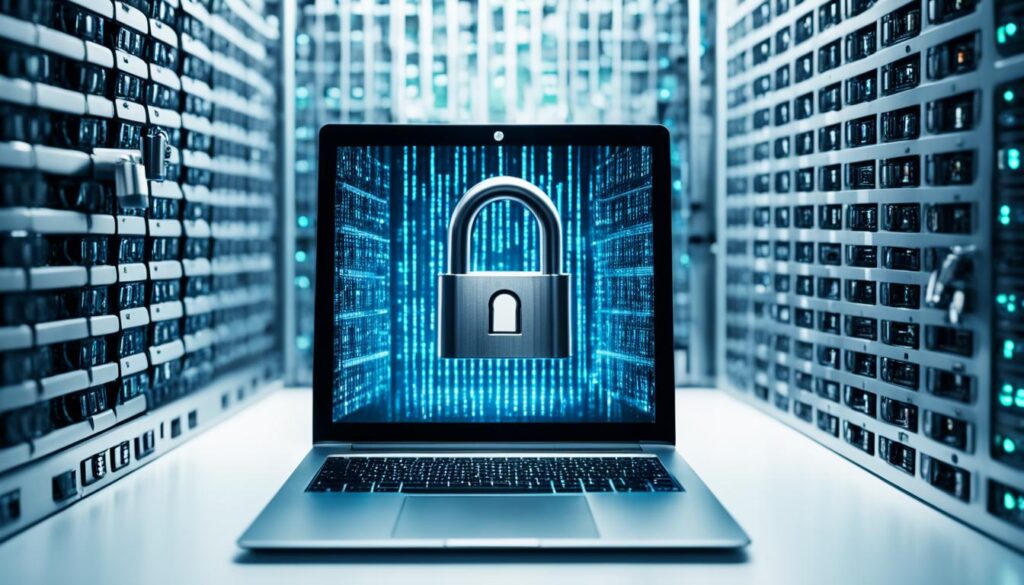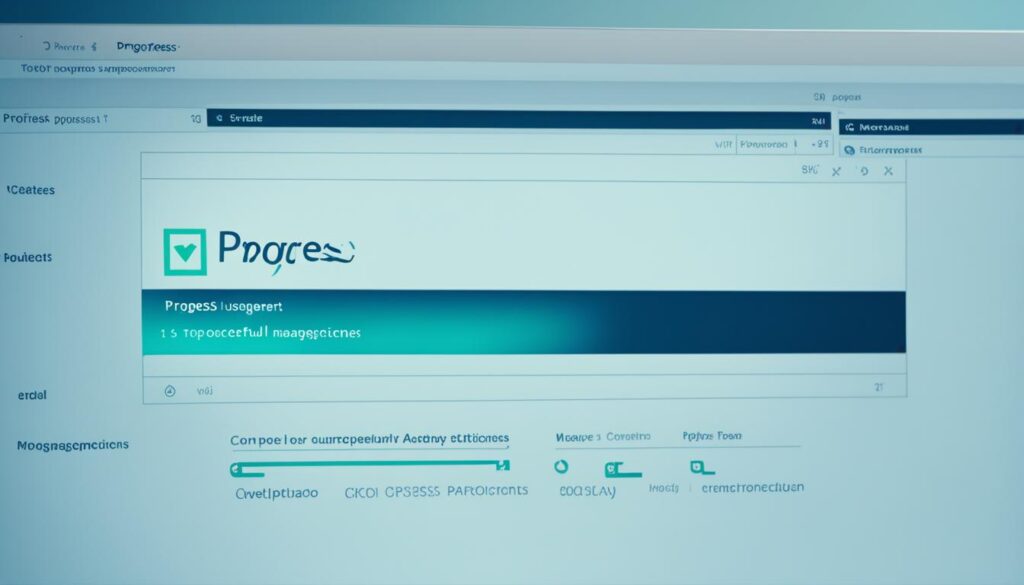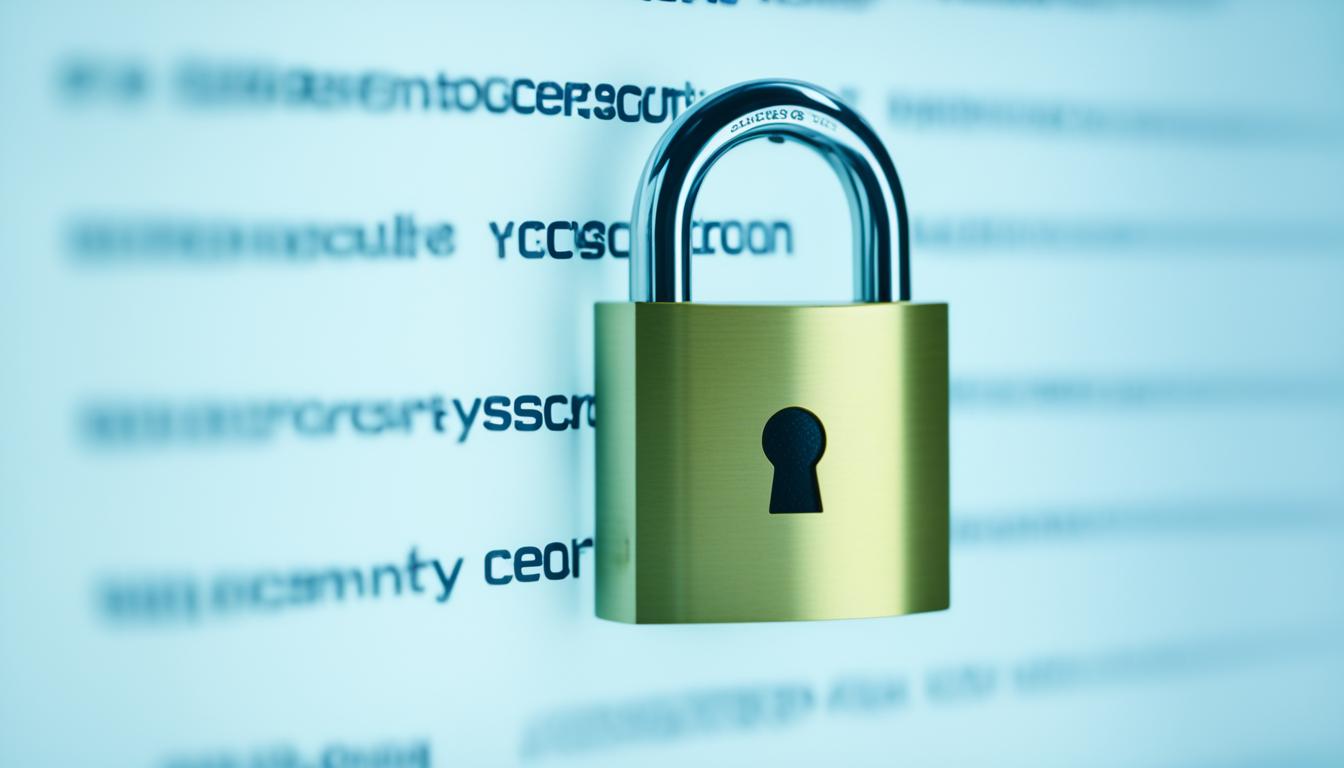Implementing cybersecurity best practices is crucial for SMEs to protect their data and systems from cyber threats. Small businesses need to adopt effective cybersecurity strategies and measures to ensure the security and integrity of their digital assets. In this article, we will provide a comprehensive guide on implementing cybersecurity best practices in SMEs, covering topics such as employee training, network security, data backup, and more.
The Importance of Cybersecurity for SMEs
SMEs are increasingly becoming targets for cyber attacks due to their perceived vulnerabilities and lack of robust security measures. It is essential for small businesses to understand the importance of cybersecurity and the potential risks they face in the digital landscape. By prioritizing cybersecurity, SMEs can protect their sensitive data, maintain customer trust, and avoid financial and reputational damages.
Employee Training and Security Awareness
- Train employees in security principles and best practices
- Educate employees about cybersecurity risks and common attack vectors
- Teach safe online practices, password management, and recognizing phishing attempts
- Emphasize the importance of reporting suspicious activities
Network Security Measures
- Implement firewall protection
- Secure Wi-Fi networks with strong passwords
- Segment the network to prevent unauthorized access
- Ensure secure configurations for routers, switches, and other network devices
Data Backup and Recovery
- Regularly back up important business data
- Implement secure data storage solutions
- Develop comprehensive disaster recovery plans
- Consider cloud backup solutions and offsite data storage
Access Control and User Privileges
- Limited employee access to data and systems
- Enforce the principle of least privilege
- Implement strong passwords and multi-factor authentication
Regular Software Updates and Patch Management
- Keep software up to date with the latest security patches
- Ensure timely installation of updates for operating systems, applications, and security software
Incident Response and Business Continuity Planning
- Develop comprehensive incident response plans
- Establish communication channels to notify stakeholders
- Regularly test and train employees on the incident response plan
Ongoing Monitoring and Continuous Improvement
- Regularly assess cybersecurity posture and conduct security audits
- Monitor network activities for signs of compromise
- Stay proactive in identifying and addressing potential vulnerabilities
The Importance of Cybersecurity for SMEs
Small businesses are increasingly becoming targets for cyber attacks due to their perceived vulnerabilities and lack of robust security measures. In today’s digital landscape, it is essential for SMEs to understand the importance of cybersecurity and the potential risks they face.
Cybersecurity plays a critical role in protecting sensitive data, maintaining customer trust, and safeguarding financial and reputational interests. Ignoring cybersecurity challenges can have serious consequences for entrepreneurs and small businesses.
By prioritizing cybersecurity, SMEs can mitigate the risks associated with cyber threats. Implementing comprehensive cybersecurity measures ensures that businesses are well-equipped to defend against potential attacks and protect their digital assets.
The Cybersecurity Risks for SMEs
Small businesses are vulnerable to a wide range of cyber threats that can lead to financial losses, data breaches, and reputational damage. Some of the key cybersecurity risks faced by SMEs include:
- Distributed Denial of Service (DDoS) attacks
- Phishing and social engineering attacks
- Ransomware and malware infections
- Data breaches and unauthorized access
- Insider threats and employee negligence
These cyber threats can have devastating effects on small businesses, often resulting in substantial financial losses, legal liabilities, and loss of customer trust. Recognizing the risks and taking proactive steps to address them is crucial for SMEs.
The Cybersecurity Challenges for Entrepreneurs
Entrepreneurs face unique challenges when it comes to cybersecurity. As small business owners, they often have limited resources, budgets, and technical expertise. However, these challenges should not be viewed as obstacles but rather opportunities to strengthen cybersecurity practices.
Some of the common cybersecurity challenges entrepreneurs may encounter include:
- Limited budget for cybersecurity investments
- Lack of awareness and understanding of cyber threats
- Difficulty in finding skilled cybersecurity professionals
- Keeping up with rapidly evolving cyber attack techniques
- Compliance with industry regulations and legal requirements
Despite these challenges, entrepreneurs must prioritize cybersecurity and make it an integral part of their business strategy. Investing in cybersecurity measures can help protect their businesses, gain a competitive advantage, and ensure long-term success.
| Cybersecurity Risks for SMEs | Impact |
|---|---|
| Data breaches and unauthorized access | Loss of sensitive information, legal liabilities, reputational damage |
| Phishing and social engineering attacks | Financial losses, stolen credentials, compromised systems |
| Ransomware and malware infections | Data encryption, financial extortion, downtime |
| Distributed Denial of Service (DDoS) attacks | Website and network disruptions, loss of business |
| Insider threats and employee negligence | Data breaches, unauthorized access, internal sabotage |
The table above illustrates some of the common cybersecurity risks faced by SMEs and their potential impact on businesses.
Employee Training and Security Awareness
Training our employees in cybersecurity best practices is an essential step in safeguarding our SME from potential threats. By educating our workforce about cybersecurity risks, attack vectors, and safe online practices, we can significantly reduce the chances of a successful cyber attack.
During cybersecurity training sessions, we emphasize the importance of employee awareness and the role they play in protecting our organization’s sensitive data. By creating a security-conscious culture, our employees become the first line of defense against cyber threats.
Best Practices for Employee Security
Implementing the following best practices helps strengthen employee security:
- Strong Passwords: Encourage employees to use unique, complex passwords and avoid reusing them across different accounts.
- Multi-Factor Authentication (MFA): Enable MFA for employee accounts to add an extra layer of security during login.
- Phishing Awareness: Educate employees about identifying phishing attempts, including suspicious emails, links, or attachments.
- Safe Browsing Habits: Instruct employees to avoid clicking on unknown or suspicious websites and to be cautious when downloading files.
- Reporting Suspicious Activities: Emphasize the importance of reporting any unusual activities or security incidents to appropriate personnel.
By adhering to these best practices, our employees become active participants in maintaining a secure digital environment.
Cybersecurity Education for SMEs
To enhance employee awareness and understanding of cybersecurity, we provide ongoing education and resources. These include:
- Regular Training Sessions: Conduct regular cybersecurity training sessions to keep employees informed about the latest threats, attack techniques, and preventive measures.
- Online Training Programs: Utilize online training platforms that offer interactive courses and modules on cybersecurity topics.
- Security Awareness Materials: Share educational materials, such as newsletters, videos, and infographics, to reinforce cybersecurity best practices.
- Simulated Phishing Exercises: Conduct simulated phishing exercises to assess employee readiness and improve their ability to identify and report phishing attempts.
The image above captures the importance of cybersecurity training for employees, providing them with the knowledge and skills to protect our SME’s valuable assets.
Network Security Measures
Protecting the network infrastructure is vital for SMEs to defend against cyber threats. Implementing effective network security measures is crucial to ensure the security and integrity of your digital assets. In this section, we will explore key strategies that will help you secure your network and mitigate potential risks.
Firewall Protection
One of the fundamental steps in securing your network is implementing a reliable firewall. A firewall acts as a barrier between your internal network and the external world, monitoring and filtering incoming and outgoing traffic based on predetermined security rules. By configuring your firewall to block unauthorized access and suspicious traffic, you can significantly reduce the risk of cyber attacks.
Securing Wi-Fi Networks
Wireless networks, such as Wi-Fi, can be vulnerable to unauthorized access if not properly secured. Ensure that your Wi-Fi network is encrypted using strong encryption protocols like WPA2 or WPA3. Use complex passwords and change them regularly to prevent unauthorized users from accessing your network. Additionally, consider implementing a separate guest network to isolate guest users from your main network.
Network Segmentation
Network segmentation involves dividing your network into smaller, isolated segments to enhance security. By separating different types of network traffic into distinct segments, you can limit the impact of a potential breach and prevent lateral movement by attackers. This approach adds an extra layer of security, especially when combined with strict access controls and firewall policies.
Secure Configuration
Ensuring secure configurations for your network devices is crucial for maintaining a robust cybersecurity posture. Regularly update firmware and software to patch any known vulnerabilities. Change default usernames and passwords and use strong, unique credentials for authentication. Implementing secure configurations enhances your network’s resilience against cyber threats.
Implementing these network security measures will significantly strengthen your cybersecurity defenses and protect your SME from potential threats. In the next section, we will explore the importance of data backup and recovery, essential for mitigating the impact of cyber attacks and ensuring business continuity.
Data Backup and Recovery

Regularly backing up important business data is a critical practice to protect SMEs from data loss due to cyber attacks or natural disasters. Small businesses should implement secure data storage solutions and develop comprehensive disaster recovery plans to ensure the availability and integrity of their data. Cloud backup solutions and offsite data storage options can provide additional layers of protection for SMEs.
When it comes to data backup, relying solely on local storage solutions is risky. A single hardware failure or a cyber attack can result in the loss of valuable information. To mitigate this risk, SMEs should consider utilizing cloud backup solutions. Cloud backup allows for automatic, secure, and offsite storage of data, providing an added layer of protection against physical damage or unauthorized access to on-premise storage devices.
With cloud backup, your business data is encrypted and stored in remote servers, safeguarded by top-tier security measures. This ensures that even in the event of a disaster or data breach, your information remains protected and recoverable.
In addition to cloud backup, SMEs should also develop comprehensive disaster recovery plans. These plans outline the necessary steps to be taken in case of a data loss event, including the recovery process and the roles and responsibilities of employees involved. Regular testing and updates to these plans are essential to ensure their effectiveness and relevance.
Implementing offsite data storage is another crucial aspect of data backup and recovery. Storing backup data in a different physical location than your primary site provides an additional layer of protection against site-specific disasters such as fires, floods, or theft. It ensures that even if your primary location is compromised, your data remains safe and recoverable.
By implementing secure data storage solutions, developing disaster recovery plans, and utilizing cloud backup and offsite data storage options, SMEs can safeguard their valuable data and minimize the impact of potential data loss incidents. Prioritizing data backup and recovery measures is essential for the long-term security and continuity of your business.
Data Backup and Recovery Best Practices:
- Regularly backup all important business data, including customer information, financial records, and intellectual property.
- Utilize cloud backup solutions for secure and offsite storage of data.
- Create and regularly update comprehensive disaster recovery plans.
- Test the effectiveness of your backup and recovery processes through regular drills and simulations.
- Implement offsite data storage to protect against site-specific disasters.
| Data Backup Methods | Advantages | Disadvantages |
|---|---|---|
| Cloud Backup | Automatic and secure offsite storage, easy scalability, reliable data recovery | Dependent on internet connectivity, ongoing subscription costs |
| On-premise Backup | Immediate access to backup data, full control over storage infrastructure | Prone to physical damage, vulnerable to theft or unauthorized access |
| Hybrid Backup | Combination of on-premise and cloud backup for added redundancy | Higher costs, increased complexity in managing multiple backup solutions |
Access Control and User Privileges
Limiting employee access to data and systems and implementing strong access controls is essential for SME cybersecurity. At OurCompany, we understand the importance of user access control and user privileges in maintaining a secure digital environment.
Implementing the Principle of Least Privilege
One effective approach to access control is enforcing the principle of least privilege. With the principle of least privilege, employees are granted only the minimum level of access necessary to perform their job duties. This limits the potential damage that can be caused by a compromised account or an insider threat.
OurCompany recommends regularly reviewing user access privileges to ensure they align with employees’ current roles and responsibilities. By regularly updating user privileges, you can prevent unnecessary access to sensitive data and mitigate the risk of unauthorized actions.
Strong Passwords and Multi-factor Authentication
Implementing strong passwords and multi-factor authentication (MFA) adds an extra layer of security to user authentication. Encourage employees to create strong, unique passwords that are difficult to guess and avoid reusing passwords across different accounts.
Additionally, consider implementing multi-factor authentication, which requires users to provide multiple forms of verification, such as a password and a one-time verification code sent to their mobile device. MFA significantly reduces the risk of unauthorized access, even if a password is compromised.
Regular User Access audits
To ensure compliance with access control policies and identify any potential gaps or vulnerabilities, OurCompany recommends conducting regular user access audits. These audits help identify any unauthorized access, excessive permissions, or unusual user behaviors.
Employee Training on Access Control
Effective user access control requires the collaboration of your entire workforce. It is vital to provide comprehensive training to employees on access control best practices and the importance of safeguarding sensitive data. This training should cover topics such as password hygiene, the risks of sharing credentials, and the potential consequences of unauthorized access.
Regular Software Updates and Patch Management

Keeping software up to date is crucial for safeguarding SMEs against known vulnerabilities and securing software vulnerabilities. Regular software updates and effective patch management processes are essential elements of a robust cybersecurity strategy. By prioritizing timely installation of updates for operating systems, applications, and security software, SMEs can significantly enhance their cybersecurity defenses.
The Importance of Software Updates
Software updates play a vital role in cybersecurity as they address security vulnerabilities and fix bugs that can be exploited by cybercriminals. Failure to update software exposes SMEs to potential attacks and makes them more susceptible to data breaches, ransomware, and other cyber threats.
By regularly updating software, SMEs can:
- Protect Against Exploited Vulnerabilities: Updates often contain security patches that address known vulnerabilities. By promptly installing these updates, SMEs can protect their systems and data from being compromised by cybercriminals.
- Maintain Strong Cybersecurity Posture: By staying up to date with software updates, SMEs demonstrate a commitment to cybersecurity, which can deter potential attackers and make their systems less appealing targets.
- Ensure Compatibility: Software updates often include compatibility improvements, ensuring that SMEs’ systems can work seamlessly with other software and hardware components.
Effective Patch Management in SMEs
To maximize the impact of software updates, SMEs should establish robust patch management processes. Patch management involves evaluating, testing, and deploying updates efficiently to minimize disruption while maximizing cybersecurity.
Here are key steps for effective patch management:
- Identify and Prioritize: SMEs should identify all the software used within their organization and prioritize updates based on the severity of vulnerabilities and the potential risk to their systems.
- Test Updates: Before deploying updates, it is crucial to test them in a controlled environment to ensure compatibility and prevent unintended consequences.
- Plan Deployment: SMEs should develop a deployment plan that minimizes disruption to operations. This can include scheduling updates during periods of low activity or implementing phased deployment to minimize the impact on productivity.
- Automate when Possible: Leveraging automated patch management solutions can streamline the process and ensure updates are consistently applied across all systems.
- Monitor and Verify: Ongoing monitoring is essential to identify any issues that may arise after updates are applied. SMEs should verify that updates have been successfully installed and check for any unexpected system behavior.
By following these best practices, SMEs can effectively manage software updates and patch vulnerabilities, significantly reducing the risk of cyber attacks and enhancing their overall cybersecurity posture.
| Benefits of Regular Software Updates | Benefits of Effective Patch Management |
|---|---|
| Protection against exploited vulnerabilities | Identification and prioritization of software vulnerabilities |
| Maintenance of a strong cybersecurity posture | Testing and verification of updates |
| Compatibility improvements | Efficient deployment planning |
| Automation of patch management processes | |
| Ongoing monitoring and verification |
Incident Response and Business Continuity Planning
Despite our best efforts, SMEs may still fall victim to a cyber attack. That’s why having an incident response plan in place is crucial to minimize the impact of such incidents and ensure business continuity.
Our comprehensive incident response plans outline the steps to be taken in the event of a cyber attack. These plans include:
- Immediate response actions to contain the attack and prevent further damage.
- Isolation of affected systems or networks to prevent the spread of the attack.
- Identification and analysis of the attack to understand the nature and extent of the breach.
- Remediation and restoration of systems to their normal operating state.
- Establishment of communication channels to notify stakeholders, including customers, employees, and regulatory authorities.
- Coordination with law enforcement agencies, if necessary, to investigate and prosecute perpetrators.
To ensure the effectiveness of our incident response plans, we regularly conduct testing and training exercises. These exercises simulate different cyber attack scenarios and allow us to evaluate the efficiency and responsiveness of our incident response teams and processes.
Cyber Attack Response Team
As part of our incident response planning, we have a dedicated Cyber Attack Response Team consisting of cybersecurity experts, IT professionals, legal advisors, and senior management representatives. This team is responsible for swiftly responding to and managing cyber incidents, coordinating with relevant stakeholders, and ensuring effective communication throughout the incident response process.
By practicing proactive incident response planning and continuous improvement, we are better equipped to handle cyber attacks and minimize their impact on our business operations. Our incident response plans and team play a crucial role in maintaining business continuity and safeguarding the trust of our customers and stakeholders.
Ongoing Monitoring and Continuous Improvement
Implementing cybersecurity best practices is an ongoing process that requires continuous monitoring and improvement. As cyber threats evolve, it is essential for small and medium enterprises (SMEs) to stay ahead of the curve in securing their digital assets.
Regularly assessing the cybersecurity posture of your business is a crucial step in maintaining a strong defense against potential threats. Conducting cybersecurity audits and security assessments allows you to identify vulnerabilities and areas for improvement. By understanding your organization’s security gaps, you can take proactive measures to strengthen your cybersecurity defenses.
In addition to periodic audits, continuous monitoring of network activities is vital for detecting any signs of compromise. By closely monitoring network traffic and implementing robust cybersecurity monitoring tools, SMEs can quickly identify and respond to potential breaches or unauthorized access attempts. This proactive approach helps minimize the impact of cyber threats and protects sensitive data.
Furthermore, improving cybersecurity practices requires an ongoing commitment to staying aware of the latest industry trends and best practices. By keeping abreast of emerging threats and advancements in cybersecurity technologies, SMEs can adapt and update their security measures accordingly. Continuous education and training programs help employees stay vigilant and be well-equipped to spot and mitigate cybersecurity risks.







